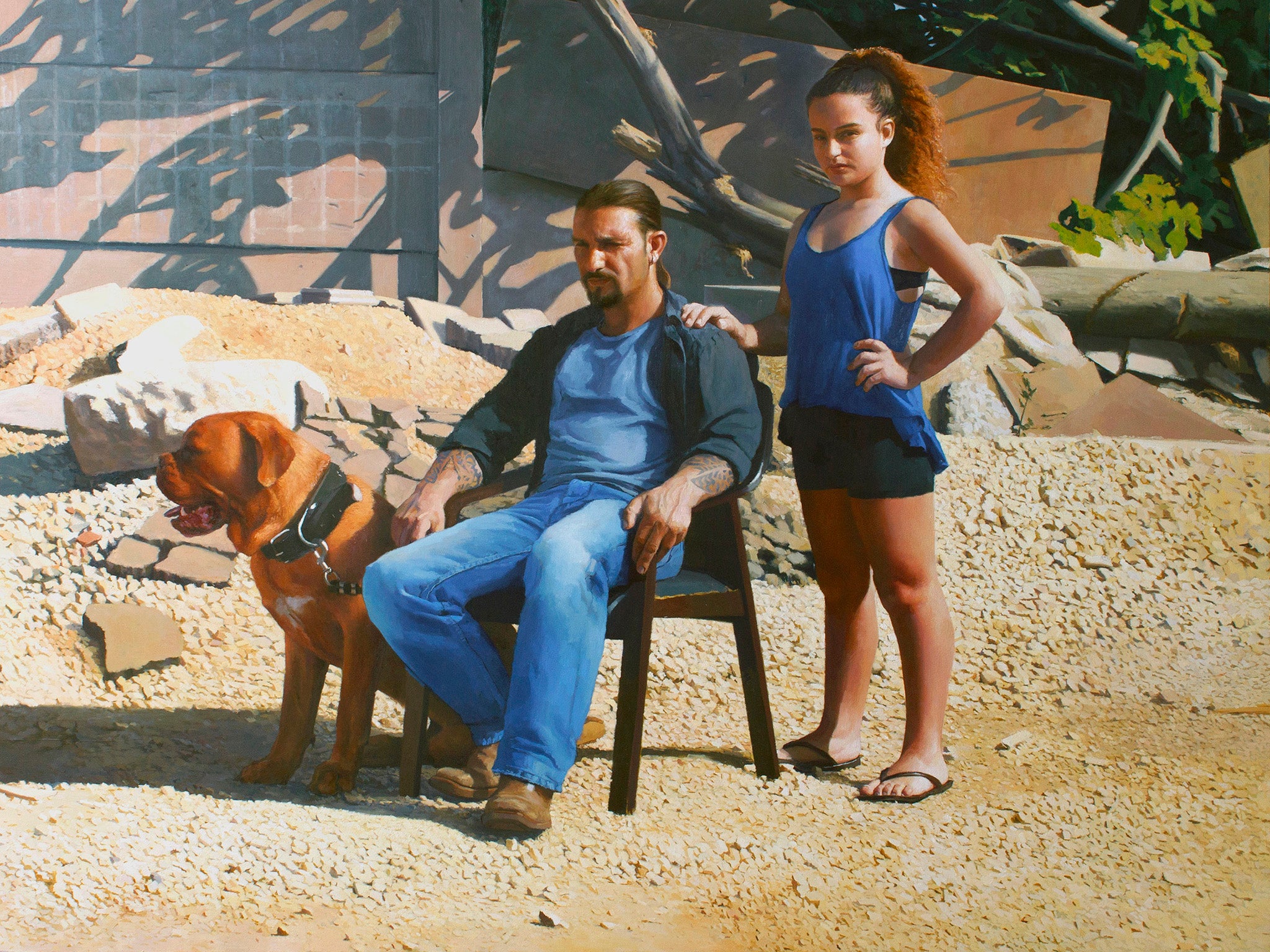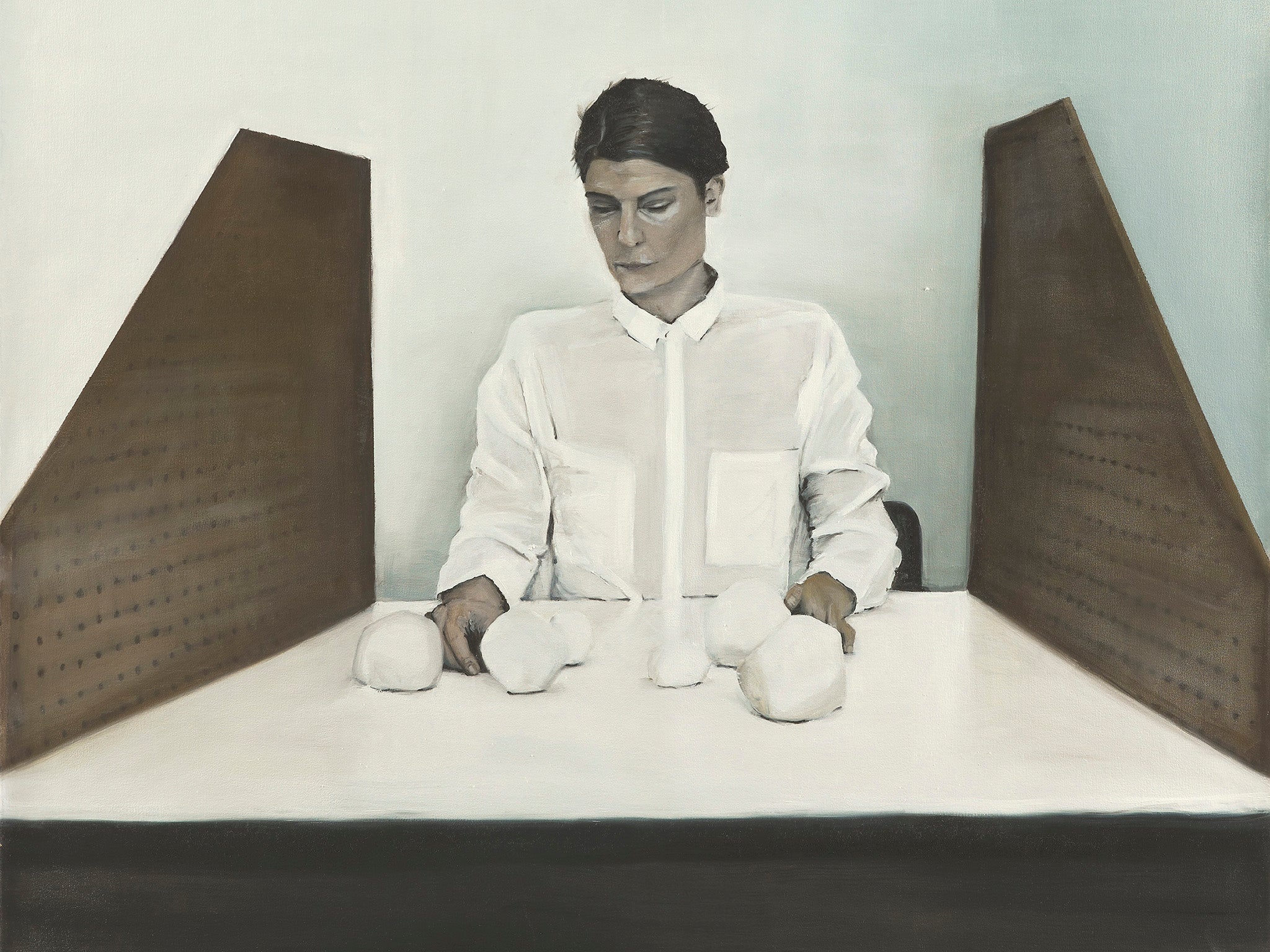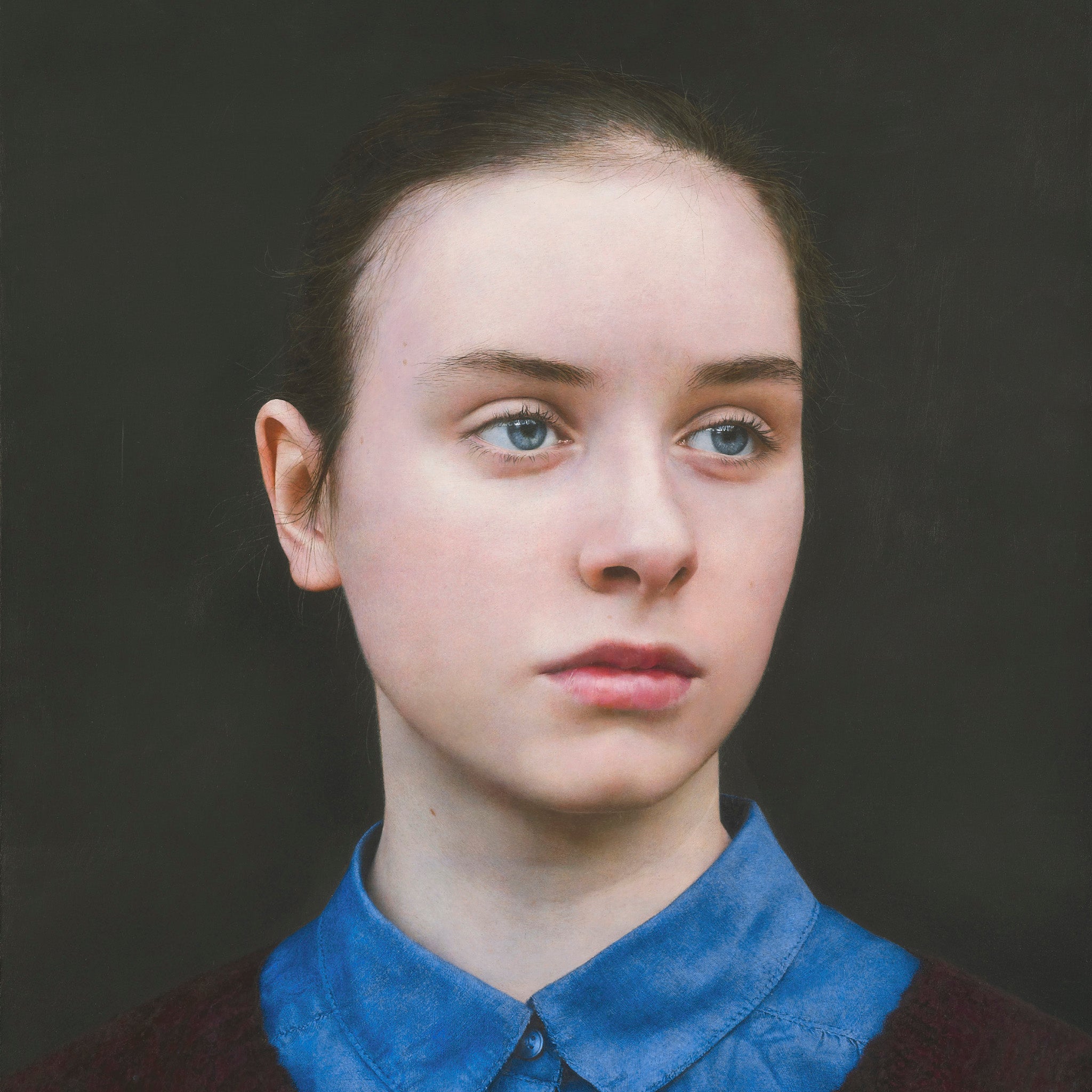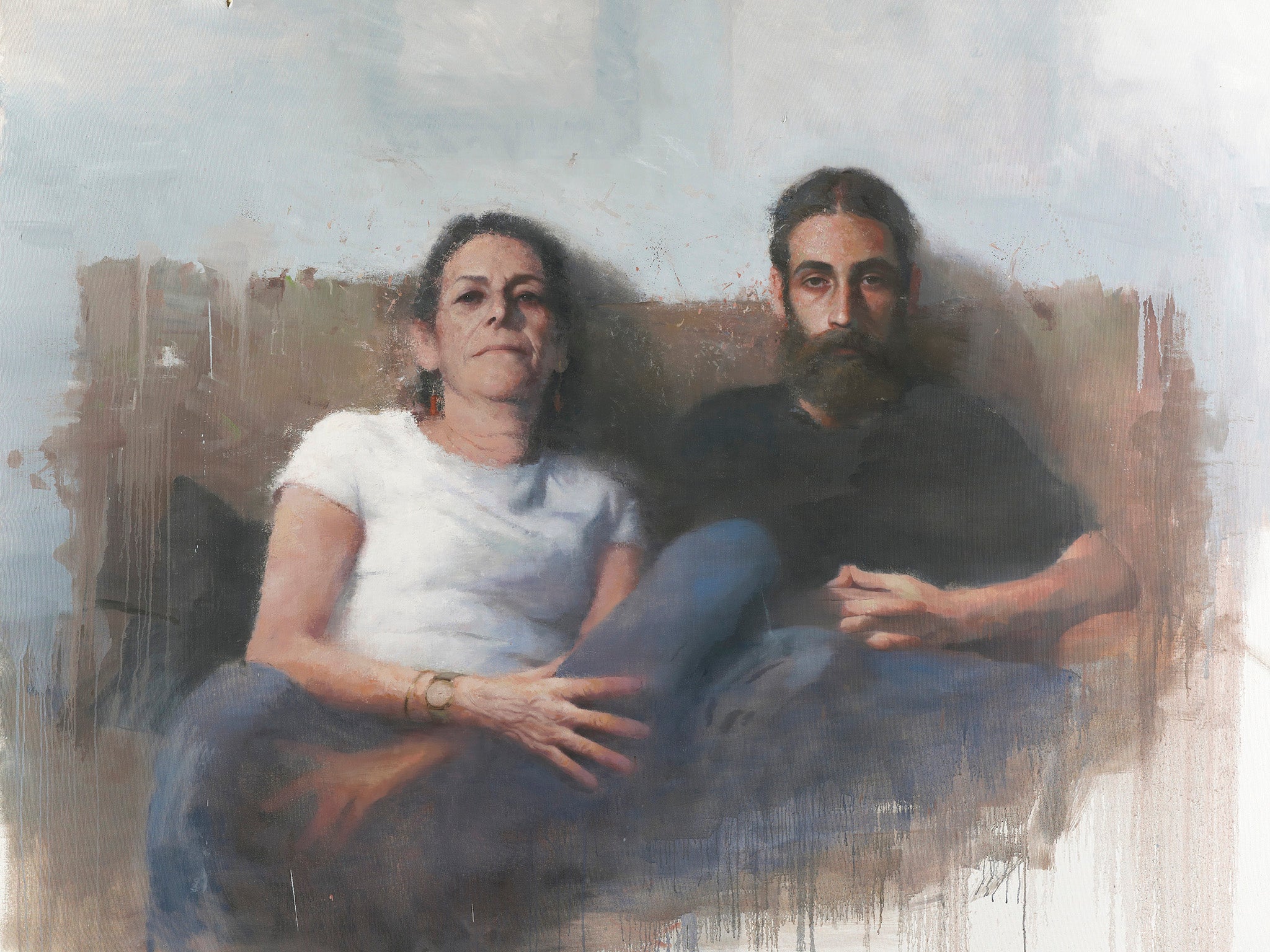BP Portrait Award: How today's painters concentrate on depicting loved ones rather than famous faces
My one quibble is that despite its insistence on quality the award continues to brand itself with BP

Your support helps us to tell the story
From reproductive rights to climate change to Big Tech, The Independent is on the ground when the story is developing. Whether it's investigating the financials of Elon Musk's pro-Trump PAC or producing our latest documentary, 'The A Word', which shines a light on the American women fighting for reproductive rights, we know how important it is to parse out the facts from the messaging.
At such a critical moment in US history, we need reporters on the ground. Your donation allows us to keep sending journalists to speak to both sides of the story.
The Independent is trusted by Americans across the entire political spectrum. And unlike many other quality news outlets, we choose not to lock Americans out of our reporting and analysis with paywalls. We believe quality journalism should be available to everyone, paid for by those who can afford it.
Your support makes all the difference.The BP Portrait Award, the most important contest worldwide solely for portraits, carries a first prize of £30,000 and has been a fixture in the National Portrait Gallery schedule since its inception 36 years ago. What emerged this year is an overview of contemporary portraiture, its myriad subject matter and motivations. Unlike many of the portraits in the NPG, the majority of sitters here are anonymous, family or friends. The only exception is an instantly familiar grizzled Bob Geldof painted by French artist Nathalie Beauvillain Scott. The artist has poignantly painted him on one side of the canvas, allowing the losses in his life to fill the other half.
This year the award attracted an unprecedented number of entries (2,748) from 92 countries, whittled down to a final choice of 55. The large international intake was encouraged perhaps by the fact that the initial submission could now be by JPEG.
The winning entry, Annabelle and Guy by Israeli artist Matan Ben Cnaan, is a worthy choice, and it’s the first time an Israeli artist has won. Cnann has chosen to portray his friend Guy, his daughter and his dog posed in the scouring light of Israel’s landscape. His inspiration is the Biblical story of Jephthah who led the Israelites into battle against the Ammonites, vowing that if they won he would sacrifice the first thing that would greet him on his return. He believed it would be his dog, but had to fulfil his promise by sacrificing his daughter. While it is not a political story it becomes one here, filled with pathos. Guy’s powerful face is uncompromising as he sits between his daughter and their dog, squinting into the relentless sun.

Second prize Michael Gaskell is home-grown, coming from Leicester. He has participated in the BP Award five times, coming second on three previous occasions. His portrait of his niece Eliza in the style of the 15th-century artist Hans Memling stands out from its peers with its references to Old Master painters.
The third prize goes to Spanish artist Borja Buces Renard who also has chosen to paint his family. My Mother and My Brother on a Sunday Evening is an intimate portrait of his family ranged on a sofa celebrating their regular meetings on a Sunday. There is power in this work as well as an absence as the image dissolves towards the outside edges of the canvas. Renard’s father was ill (he died shortly after the paintings completion). He claims he does not want to be known as just a portrait painter, but he is a great one.
This is only one of a strong showing of Spanish entries – there are eight in all, third only to the UK and US. There is an authority and scrupulousness in these Spanish painters, an unflinching honesty in works like Natalia by Jorge Abbad- Jaime. I also liked another family grouping, Family Portrait painted by Salvador Antúnez del Cerro. It is seasoned with pathos as his grandmother, the only seated member, posed complete with comfy looking track shoes, died shortly after the work was complete.

Jordan Sokol, initially from the US but now living in Spain, painted his friend Tenold who agreed to sit in exchange for a place to stay as he came to Madrid to visit the Prado to study their masterpieces. The Old Masters’ influence has rubbed off in this painting that glows with inner light.
The award for BP Young artist was given to the American artist Eleana Antonaki for her striking portrait of fellow artist Julie Laenkholm. Posed within an architectural space she is one of the artists who has truly placed her sitter within an architectural context.
The BP travel award goes to French artist Magali Cazo whose entry Savageonne is one of the most overtly contemporary in feel, with its reductionist confrontational style.
Setting plays an important part in many of the works. British artist Nancy Fletcher was commissioned to paint Hamish and Sophie Forsyth having met them at a previous BP Portrait Award. She stayed with them, observing their habits and encouraged them to choose their surrounding objects in the style of British Portraiture. Their choice says much of them personally. Sophie Forsyth is surrounded by photographs of her young family, while Hamish is pictured reading a financial paper surrounded by a few choice cabbages.
The only Romanian artist from the fertile artistic breeding ground of Cluj, Dragoş Bădiţă, chose to paint his long distance girlfriend from above. She is enclosed in a red room eating a simple meal of Chinese soup on the floor. He draws his inspiration, he says, from the simplicity of Japanese woodblocks.

Family and selflessness appears in many of the portraits, as does friendship. Milan Ivanic in The History Men: Dr Thomas Rohkrämer and Dr Kay Schiller shows his two friends engaged in conversation. One is pensive, listening to the other in animated conversation putting his views forward. Ivanic was born in 1947 and studied in Prague before eventually settling in the UK. He says they were talking in German and “I couldn’t follow the conversation: what I could do was to draw them, and respond to the intensity of the conversation”. Painted in the heightened colours of Kokoschka and Soutine, this painter is identifiable from his place of birth and his time, and none the worse for that.
My own father collected self-portraits, mainly of unknown artists and when he died my sister and I were left with more than 300 to deal with (we gave them to the Princeton University Library). I remember growing up with them hung from floor to ceiling in the den or television room, their faces a mystery to me, their achievements largely unknown. There is something about the self-portrait that often brings out the best in a painter and several on view here chart both the process and the life of a creative artist.
The sole Turkish artist in this show, Murat Tezcan Demirbas, lays clean the tortured anguish of the artistic process in Ordeal. Sitting on the floor surrounded by paints, pencils and an alarm clock, he shows the detritus of creation, with the clock suggesting the slowness of time passing or the threat of impending deadlines of shows or entries to contests.
Another more disturbing self-portrait by Irish artist Ian Cumberland, Sink or Swim, comes from, he says, a low period of his life. I might perhaps having looked at this work put the artist on suicide watch. The artist himself says he sees the danger in the work itself. “I see it as a wake up call to try and change the things you have control over”. Both of these works, like many self-portraits give us an insight into the life of the creator and they are two of the most striking images in the show.
This carefully installed exhibition is a great introduction to portraiture in the rest of the National Portrait Gallery. I am sure with its insightful labels and fun children’s pack it will be a popular one.
My one quibble is that despite its insistence on quality the award continues to brand itself with BP. We need some new ethical sponsors now to go with powerful works like these.
‘The BP Portrait Award 2015’ continues at the National Portrait Gallery, London WC2 (020 7306 0055) to 20 September
Join our commenting forum
Join thought-provoking conversations, follow other Independent readers and see their replies
Comments